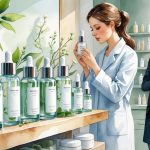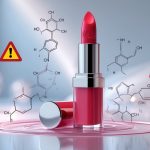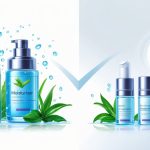Clean Beauty Brands Now Quietly Cutting Harmful Additives Most Adults Miss
The Future of Clean Beauty: Trends and Consumer Impact
What really fries my brain? Nobody even reads these ingredient lists, but the stuff goes right on your face. “Transparency” gets thrown around like confetti, but where’s the actual data? Brands launch new stuff every day, and half the time, the ads scream about what’s not inside instead of what’s actually in the bottle.
Transparency and Ethical Sourcing Trends
Ingredient transparency—supposedly a big deal, but let’s be real, most of us just squint at the label and hope for the best. I saw some stat that over 40% of shoppers now check for “natural origins” and ingredient disclosure before buying (thanks, NielsenIQ), but I don’t buy it. “Free from”—free from what, exactly? Brands yank out parabens, silicones, synthetic scents, and then jam in something with a name that sounds like a Scrabble cheat. TikTok’s full of people calling them out, but the formulas just get weirder.
Sourcing is a circus too. Suddenly, Brazil nuts are “traceable.” Traceable how? Does the farmer have a blockchain app? Big brands parade certifications—Fair Trade, COSMOS, EWG Verified—mostly to cover themselves. But I’ve seen co-ops fudge paperwork, and I’ve worked in this industry long enough to know the receipts don’t always match the story. Shoppers are getting nosier, but the answers? Still mostly fluff.
Increasing Demand for Wellness-Driven Products
Here’s a thing: “wellness” snuck into beauty like that magnesium supplement you keep forgetting to take. Now my bathroom shelf is full of mood sprays, “anti-stress” cleansers, adaptogen serums—because apparently 80% of trending skincare brands over Black Friday were “clean beauty” (Conscious Insider).
Brands toss out words like “nontoxic,” “holistic,” “microbiome friendly”—as if my SPF is going to realign my chakras. But do those adaptogens do anything unless I’m actually stressed? Dermatologists I talk to just roll their eyes. Niacinamide is suddenly “wellness,” but nobody can tell me how that’s different from regular old skincare. Some industry people claim that by 2025, every launch will hide behind “science-backed wellness.” That sounds like an inside joke—maybe I’m missing it. Still, I keep buying this stuff, so maybe the joke’s on me.
Frequently Asked Questions
Staring at shelves, running late, second-guessing that “clean” sticker—there’s no way big beauty quietly swapped out sketchy ingredients without sneaking in something else. My dermatologist just sighs when I ask about “clean” tags; trust is not a given when labels barely make sense.
What are the specific harmful additives that clean beauty brands are removing?
Let’s see—phenoxyethanol, formaldehyde releasers, and parabens always headline the “no-no” lists. Phthalates, synthetic fragrance—those too. Google any exposé and you’ll find “clean” products still hiding “cheap, harmful, and filler” stuff (Primally Pure’s take).
One day octinoxate’s out, next day it’s replaced with some “plant-based” thing nobody’s tested long-term. Why? Who knows. The EU bans stearalkonium chloride, but in the U.S., it’s “totally safe.” Brands brag about “no SLS,” then slip in a surfactant with a name that looks like a typo. I can’t keep up.
How can consumers identify greenwashing tactics in skincare and beauty products?
Here’s the trick: brands love slapping on leaves, earthy colors, and “natural” badges—whatever that’s supposed to mean. “Clean at Sephora” has a public list of banned stuff, but their products still pile on confusing ingredients (even Sephora admits it). My chemist friend can’t even remember what “bio-based glycol” is half the time.
I compared two “eco” cleansers last week—both had methylisothiazolinone. Ingredient lists are required by law, but who memorizes every banned chemical? I lost interest halfway through a TikTok on “sneaky greenwashing.” It’s chaos.
Which beauty brands have been called out for unethical practices and why?
This gets uncomfortable. Nobody wants to see their favorite brand dragged, but it happens. Clean beauty darlings get slammed for ingredient loopholes or overblown marketing. Most “clean” formulas still sneak in unvetted chemicals (Primally Pure called it out). Remember that vegan skincare brand that forgot to mention its mica came from sketchy mines? Or the “cruelty-free” company that got called out for legal fine print?
One brand hyped up a sulfate-free shampoo, but the new preservative made people’s scalps freak out. I read about a lawsuit against a big retailer—they just redefined “clean” to dodge the complaint. They called it “clarification.” Commenters lost it.
What should I look for on a clean beauty product’s label to ensure it’s truly safe?
If you think every label lines up with science, good luck. I spend way too long squinting at ingredient lists—transparency is nice, but confusion still wins. Look for full ingredient lists, short as possible, and clear expiration dates. If a brand admits up front what it bans, that’s a tiny win.
“Free from” stickers? Sure, but then there’s always a 15-letter synthetic lurking below. FDA and EU rules don’t match, so if a product passes both, I trust it a little more. “Dermatologist-tested” sounds fancy, but it might mean nothing—no peer review, no double-blind, just vibes.
Can you recommend some trustworthy resources for finding genuine clean beauty brands?
Honestly, I bounce around: Environmental Working Group’s Skin Deep, Paula’s Choice Ingredient Dictionary, random Instagram exposés (sometimes gold, sometimes wild guesses). Apparently, clean beauty is a $6.5 billion business and could hit $15.3 billion by 2028 (UC Law Review). Not just hype, I guess.
I check industry forums, FDA warning letters, even Reddit’s Skincare Addiction (advice ranges from genius to totally unhinged). Once I found out about an ingredient recall from a podcast before it blew up on TikTok. That’s how it goes—blink and you miss it.
What steps are being taken to improve transparency in the beauty industry?
Honestly, who even knows anymore? California’s rolling out these ingredient disclosure things—supposedly making fragrance chemicals less mysterious (at least on paper), but let’s be real, most brands outside California just… don’t. I keep seeing these so-called transparency scorecards, but I don’t trust them. Standards change every five minutes. Like, what’s even the standard this week? I can’t keep up.
Brands insist on tossing around their own “clean” definitions. No one agrees. It’s like they want us confused—so we’ll Google every ingredient ourselves and maybe just give up and buy whatever’s on sale. I scroll through TikTok and, wow, #cleanbeauty videos exploded past 200 million—does that mean anything? Or is it just more chaos? Every quarter, my inbox gets flooded with “new transparency initiatives,” but I’m always squinting at tiny font, trying to figure out if they’re actually telling me anything. Spoiler: usually not.



